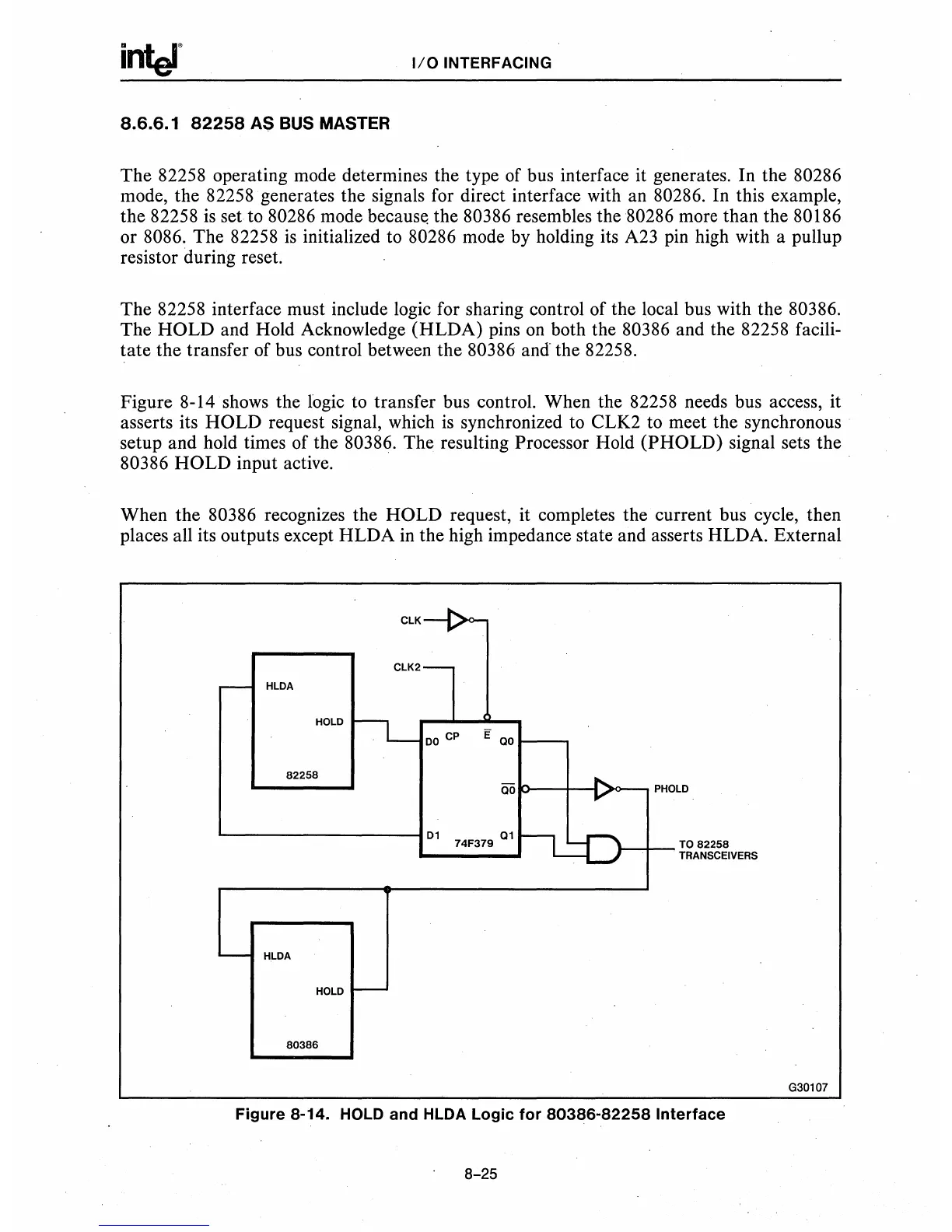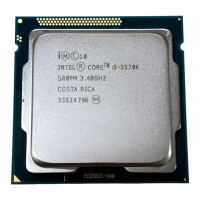liD
INTERFACING
8.6.6.1
82258
AS
BUS
MASTER
The 82258 operating mode determines the type of bus interface it generates. In the 80286
mode, the 82258 generates the signals for direct interface with an 80286. In this example,
the 82258
is
set to 80286 mode because the 80386 resembles the 80286 more than the 80186
or 8086. The 82258
is
initialized to 80286 mode
by
holding its A23 pin high with a pullup
resistor during reset.
The 82258 interface must include logic for sharing control of the local bus with the
80386.
The
HOLD
and Hold Acknowledge
(HLDA)
pins
on
both the 80386 and the 82258 facili-
tate the transfer of bus control between the
80386 and the 82258.
Figure 8-14 shows the
logic to transfer bus control. When the 82258 needs bus access,
it
asserts its
HOLD
request signal, which
is
synchronized to CLK2 to meet the synchronous
setup and hold times of the
80386. The resulting Processor Hold (PHOLD) signal sets the
80386
HOLD
input active.
When the
80386 recognizes the
HOLD
request, it completes the current bus cycle, then
places all its outputs except
HLDA
in the high impedance state and asserts HLDA. External
ClK
ClK2
HlDA
HOLD
82258
Qo
IO--+--L:>o----,
PHOlD
L.-
________
~
D1
74F379
Q1
HlDA
HOLD
80386
G30107
Figure
8-14. HOLD
and
HLDA
Logic
for
80386-82258
Interface
8-25

